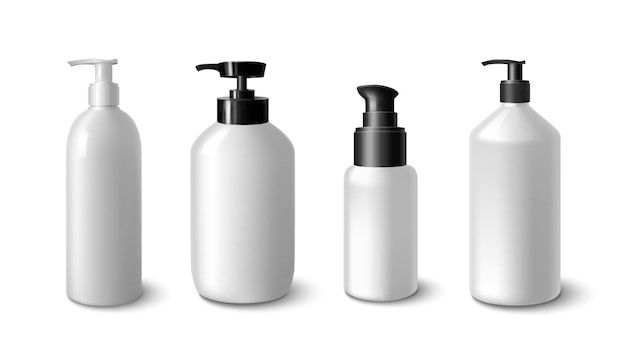industrial design graduate solveiga pakstaite&rsquos bump mark uses a gelatinebased label to let consumers know when food has passed its primedesigner solveiga pakstaite, who has developed a bioreactive food expiry label called bump mark. photograph linda nylind for the guardianbritons throw away more than 4m tonnes of consumable food and drink from their homes ever year and a revamp of the sellbydate label could save perfectly edible food from the bin bag.it was while researching how blind people utilise public transport that an industrial designer came across an innovation to keep our fridges stocked a little bit longer. solveiga pakstaite, 22, says the study led to her question how blind people can check sellby dates.&ldquoone day i thought &lsquohow on earth do blind people know when their food expires because they can&rsquot read the expiry dates and they don&rsquot know what to eat in the fridge first&rsquo&rdquo she says.the result of her curiosity is a work in progress called the bump mark a label which is attached to food packaging and changes shape when the produce deteriorates. when the food is fresh to eat, the label is smooth and curved, but when it has decayed, a plastic bump emerges when fingers are run over it.stretching beyond the needs of blind people from where the idea originated, the new labelling is being offered as an alternative to traditional best before and expiry dates. pakstaite, an industrial design and technology graduate from brunel university, claims it will give a more accurate indication of freshness and save on wastage from consumers throwing out produce which may be good to eat despite being past the date on the packaging.according to the uk government, £12bn worth of food and drink is binned each year, most of it edible. and it is a worldwide problem. the food and agriculture organisation of the un estimates that onethird of all food which is produced for human consumption is wasted, with fruit and vegetables going in the bin more than any other produce. in europe, around 100m tonnes of food are thrown away each year.pakstaite says &ldquoonly one third of visually impaired people are in paid employment so the rest of them have to survive on very small benefits and they can&rsquot really afford to be throwing food away willynilly. they also don&rsquot want to get ill so they definitely have caution but they realise how much money they are wasting, not just food waste.&rdquoshe says &ldquoi knew straight away that it couldn&rsquot just be a solution that could just help blind people because no retailer would take on and spend money on helping this very small group, unfortunately. that is when i went back to my original question, &lsquohow do blind people know when their food expires&rsquo and then i thought &lsquohow does anyone know&rsquo we have trusted these random dates that are put on and no one actually knows when their food expires and that is why we are throwing away so much food.&rdquoshe developed her device by using gelatine, a foodstuff made from the bones of animals and typically used as a setting agent for desserts. when it sets, it becomes a solid jelly but then turns to liquid when it expires.solveig pakstaite&39s bump mark. photo by linda nylind. solveig pakstaite&rsquos bump mark. photo by linda nylind. photograph linda nylindguardianprototypes for pakstaite&rsquos invention appear on the corner of food packets as a modest triangle. it consists of a layered pod on the bottom is a sheet of plastic with bumps on it, which is then topped with a gelatine solution and sealed. gelatine, being an organic material, deteriorates at the same rate as the food that is in the packaging. so when the jellylike gelatine goes &ldquobad&rdquo and turns to liquid, it means the food has gone bad too. but how can you tell that the gelatine, sealed in its little corner on a packet of cheese, has gone bad the plastic bumps can be felt at the bottom of the triangle because the tough jelly buffer has gone. the gelatine solution mimics the reaction of the food to changing temperatures. if it is kept in the cold, it will remain solid for longer whereas if it is put in warmer conditions such as a car boot or on a kitchen worktop, it will deteriorate quicker, just as a piece of meat would.the amount of gelatine used in packaging reflects the expected lifespan of the food. smaller amounts of gelatine deteriorate more quickly, so a piece of cooked chicken &ndash which needs to be eaten within days &ndash requires less gelatine than, for instance, a piece of cheese.&ldquothis plastic bump would be stuck onto the package at the same time as the food is at its freshest and this basically starts decaying at the same time. if you take it out of the fridge, the food starts expiring quicker obviously because of the higher temperature and this is going to start expiring quicker as well,&rdquo pakstaite says.&ldquoi have basically taken another food to tell you what is happening to the food inside the package. it is just that this type of food gelatine has the unique property of changing states and gelatine has this property of when it completely expires, it releases its bonds because all of the bacteria has eaten those bonds and it turns back into a liquid. so when you run your finger over the top, you can feel the bumps underneath. it is really simple &ndash it is a sandwich which breaks down and reveals the bumps underneath.&rdquothe advantage of the system, she says, is that it avoids the existing calculation of best before dates which can be too conservative, resulting in food being thrown out. under her plans, the bump mark would be applied at the time of food packaging so that if crates of food were left for periods outside of refrigeration, the effect on the food would be clear &ndash the gelatine would deteriorate at the same rate as the food. &ldquoby having this the store is having to be completely diligent and regimented and honest.&rdquothe disadvantage of using gelatine is borne out in the number of vegetarians who have said they would not buy goods that have labelling made from animal byproducts, says pakstaite, adding that she will either source an alternative or limit its use to dairy and meat products.how the system will operate in largescale food production is not yet clear. one possibility would be for manufacturers to licence the technology and the bump mark being activated when the food is packaged although they will have to decide how to ensure the devices are activated at the time of production, she says. nonetheless, last year the invention won the prestigious james dyson award, set up by the british inventor to encourage a new generation of design engineers.outside of the food industry, there is also the possibility that the packaging could be used for fresh cosmetics, also a perishable product. so far, tests have shown the gelatine can be extended to a lifespan of one month, although pakstaite believes it may last longer.she hopes that the invention could be formally introduced as a part of food packaging by the end of the year, and reduce britain&rsquos mountain of food waste. 






